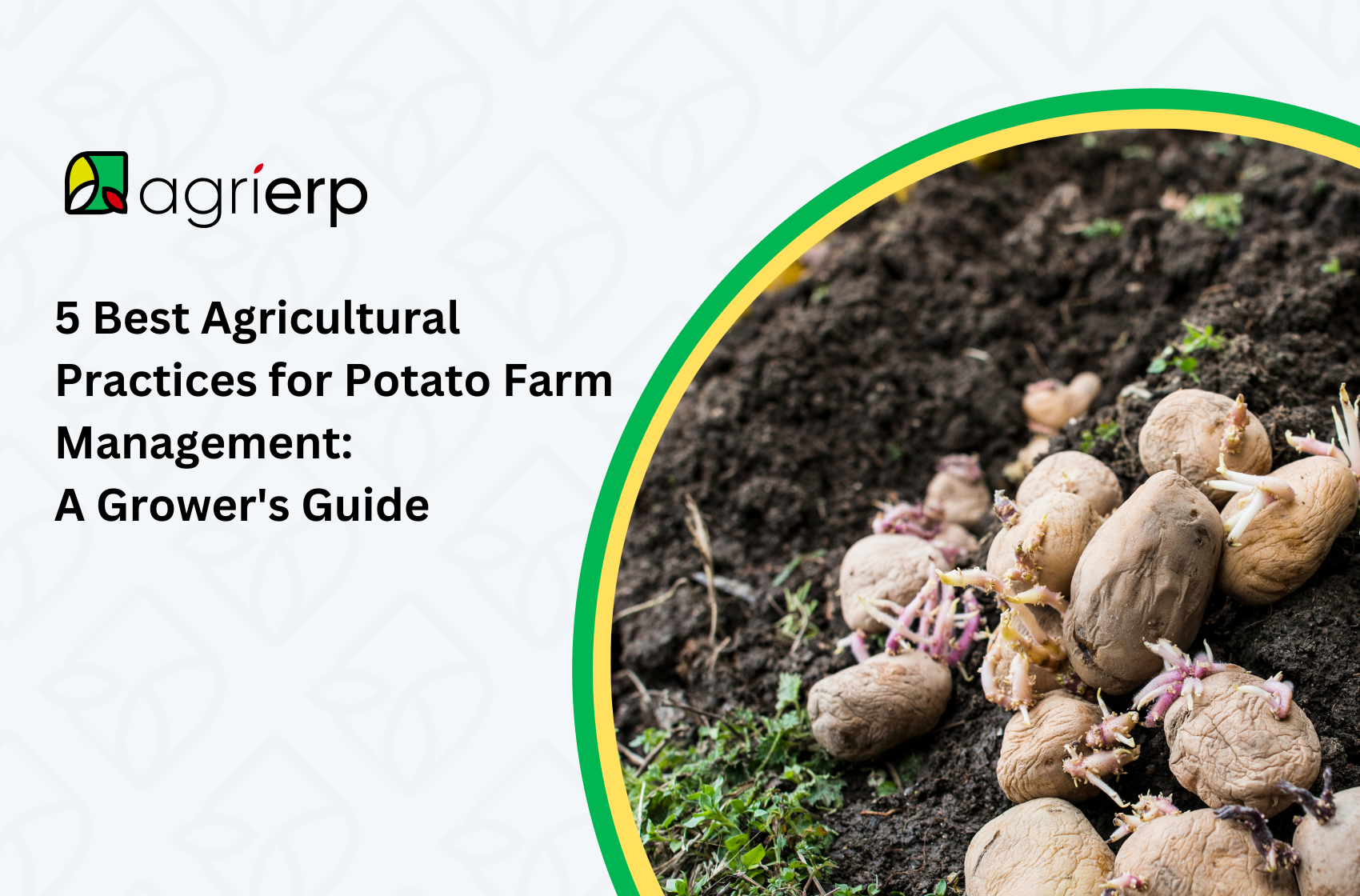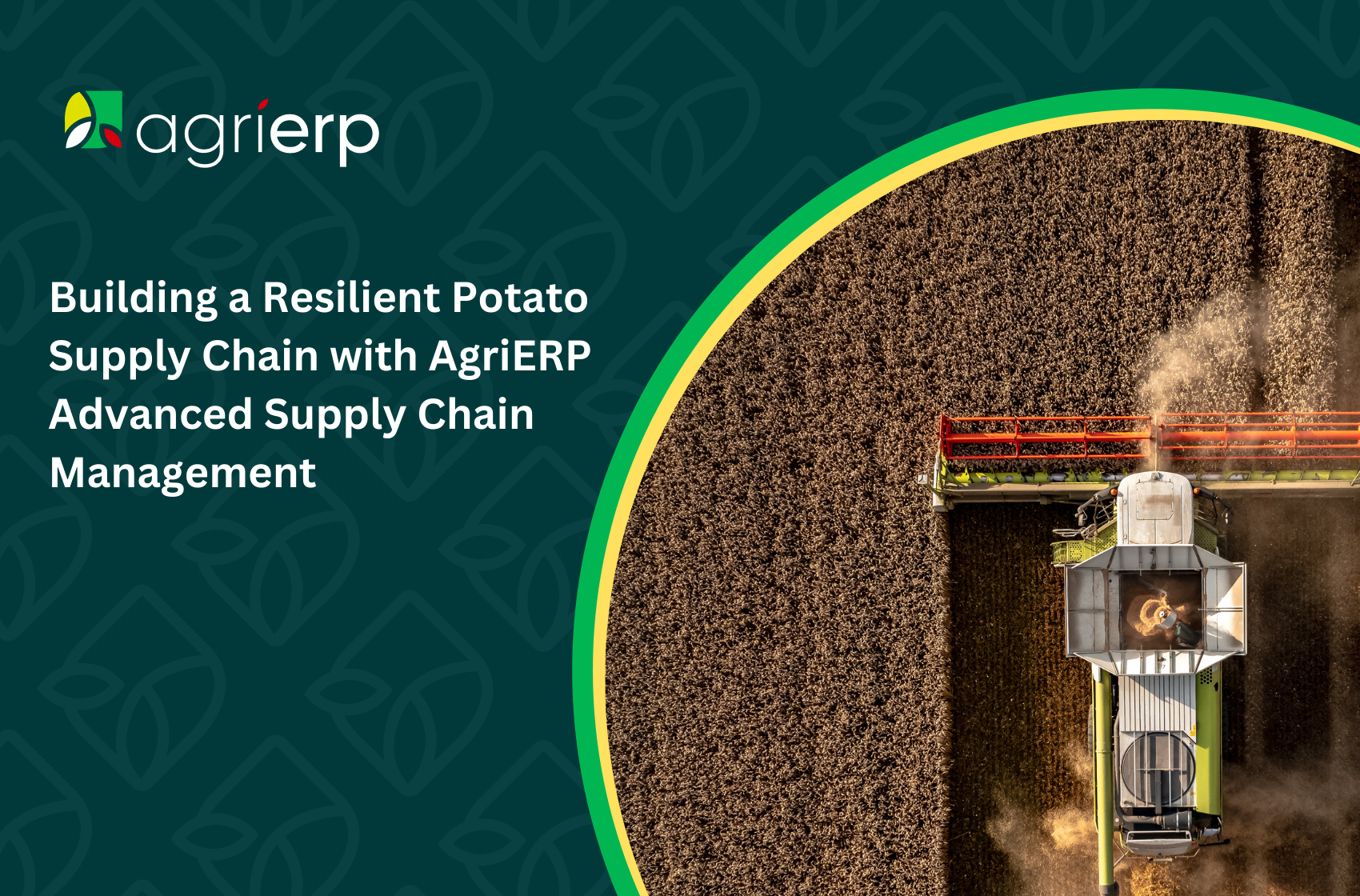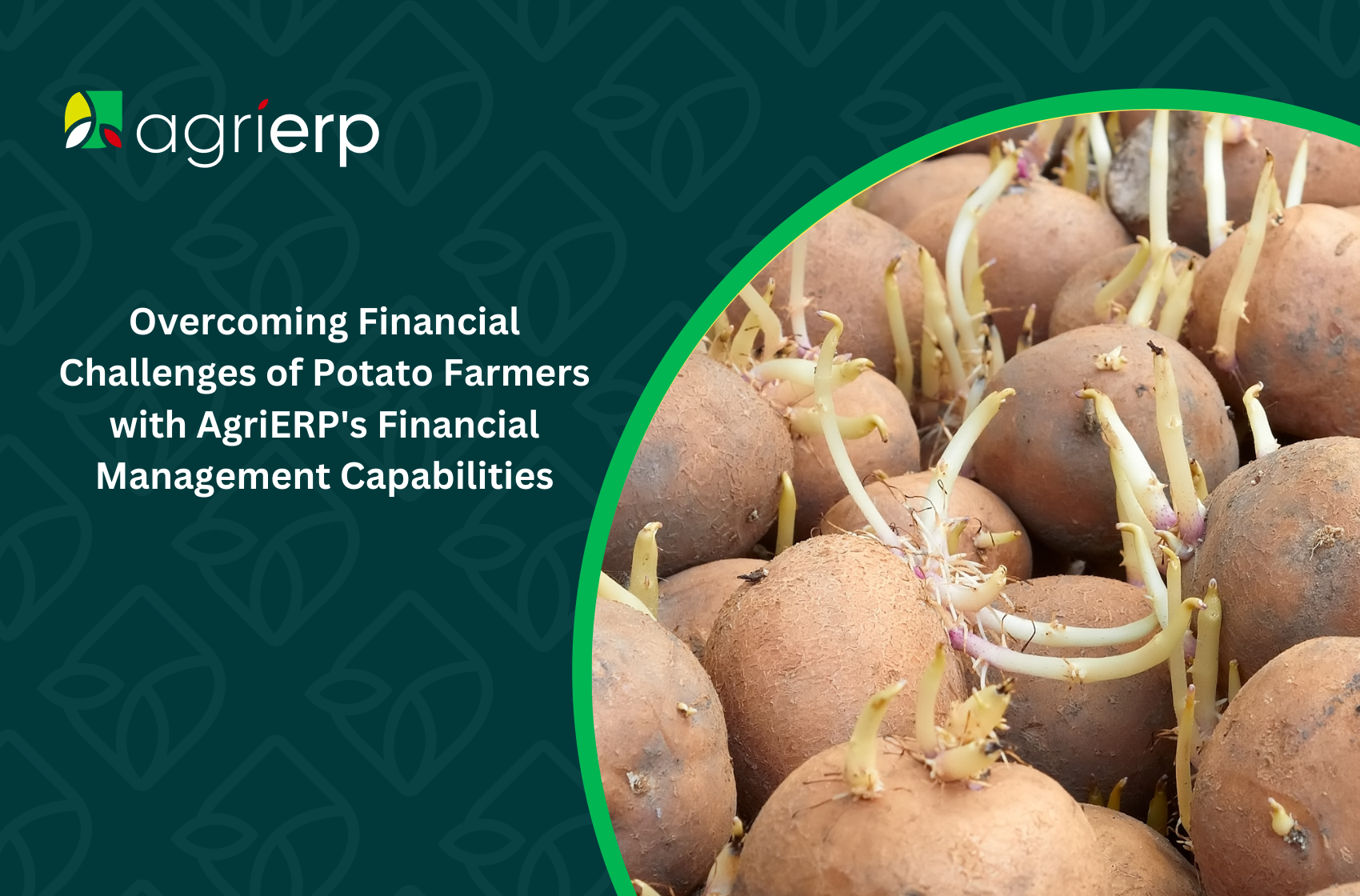Potato farming is a pillar of agriculture, providing a staple food for millions across the globe. But in a world where sustainability, yield optimization, and efficiency are the buzzwords, how does an age-old practice evolve? The expansion of modern farm management systems has redefined the cultivation of spuds, and AgriERP has emerged as a leading solution, ensuring that potato farmers are equipped with the best agricultural practices to stay relevant and competitive.
In this detailed guide, we walk through the top five agricultural practices that have transformed farm management, specifically for potato growers. From precision agriculture to market and sales optimization, we explore the strategies and tools that are propelling potato farming into the modern age.
1. Precision Agriculture: Nurturing Potatoes with Data
Precision agriculture revolves around using geospatial data, GPS guidance systems, and other information technologies to enhance agriculture. For potato farmers, this means optimizing inputs such as fertilizer, water, and pesticides to maximize yields while minimizing environmental impacts.
Implementing Precision Agriculture
Utilizing satellite imagery and soil sensors to gauge potato health and nutrient needs, farmers can now make site-specific adjustments. AgriERP integrates these technologies into a simple, user-friendly interface, allowing for seamless application in the field.
AgriERP’s Precision Agriculture Assistance
AgriERP’s precision agriculture module helps in setting up moisture sensors and satellite logistics for remote monitoring, facilitating timely and targeted crop treatments. It also offers compatibility with automated machinery, ensuring that the application of inputs is precise and efficient.
2. Sustainable Farming Techniques: A Path to Environmental Conservation
Sustainability in potato farming is not only a moral imperative but also a strategic advantage. Crop rotation, integrated pest management, and water-saving techniques are just some of the tools in the sustainable farming kit.
Sustainability Through Smart Practices
Adopting crop rotation methods breaks the lifecycle of pests and pathogens, reducing the need for chemical interventions. Introducing cover crops in fallow seasons not only maintains soil health but also aids in weed suppression, reducing the reliance on herbicides.
Leveraging AgriERP for Sustainability
AgriERP’s sustainability module offers insights into the best crop rotation cycles, pesticide usage, and soil health. By leveraging GIS technology, it also recommends the optimal places for installing water catchment and recycling systems.
3. Efficient Resource Management: Maximizing Yield, Minimizing Waste
In potato farming, managing resources efficiently can significantly impact the bottom line. From labor scheduling to equipment utilization, every aspect of resource allocation demands attention.
Minimizing Input Wastage
Optimizing the use of fertilizers and pesticides not only saves on costs but also prevents over-application, which can harm the environment. AgriERP’s inventory and logistics modules ensure that inputs are available when and where needed, minimizing waste and shortages.
Labor and Equipment Synchronization
The peak season for potato farming requires a surge in labor and equipment. AgriERP’s predictive analytics can forecast demands, allowing farmers to schedule resources efficiently. It also manages maintenance schedules, ensuring that equipment is always in top condition when needed.
4. Data-Driven Decision Making: Insights for a Bountiful Harvest
Agriculture is increasingly becoming a data-driven field, and for good reason. Accurate and timely information can mean the difference between a bountiful harvest and a disappointing yield.
Collecting and Analyzing Farm Data
AgriERP’s data collection tools gather information from field sensors, drones, and machinery to provide a comprehensive view of farm operations. Real-time data on weather patterns, pest outbreaks, and crop health informs proactive decisions that can safeguard the harvest.
Forecasting and Planning
Armed with historical data and predictive analytics, farmers can plan for future seasons with confidence. AgriERP’s forecasting models help in predicting market trends and demand, guiding farmers in making the right planting decisions.
Conclusion
Potato farming is no longer just about tilling the land and hoping for the best. It’s about employing cutting-edge technologies and adopting best practices to ensure that each crop is cultivated with maximum efficiency and care. AgriERP stands as a testament to the power of modern farm management systems and how they can revolutionize the humble spud into a powerhouse of sustainable agriculture.
We’ve outlined the top tier of agricultural practices, drilling down on how each one can be harnessed with the help of AgriERP. From precision to sustainability, from resource management to sales optimization, AgriERP offers a comprehensive solution for every aspect of potato farming.
If you’re ready to take the leap, consider integrating AgriERP into your farming operations. It’s not just about a better harvest—it’s about building a better future for potato farming.



